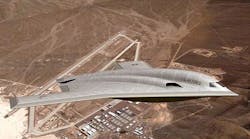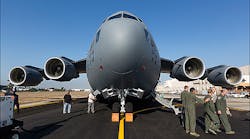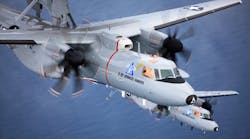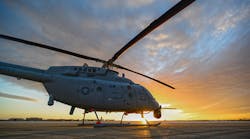The U.S. Department of Defense chose Northrop Grumman Corporation to develop a new “long-range strike bomber” (LRS-B) aircraft that would replace the B-52, in a new program estimated at nearly $1 trillion over 30 years. Northrop celebrated the opportunity to extend its bomber development, which it noted will continue a 35-year partnership with the U.S. Dept. of Defense in the B-2 stealth bomber.
"The Air Force has made the right decision for our nation's security," stated Northrop chairman, CEO, and president Wes Bush. "As the company that developed and delivered the B-2 Spirit stealth bomber, we look forward to providing the Air Force with a highly-capable and affordable next-generation Long-Range Strike Bomber.
"The long-range strike bomber will support America's defense strategy by forming the backbone of the Air Force's future strike and deterrent capabilities," stated U.S. Secretary of Defense Ash Carter at a news conference. He claimed the new LRS-B would meet the nation's need for long-range strike aircraft for the next 50 years.
The LRS-B developed as a concept following the demise of the USAF’s Next-Generation Bomber program, which aimed to develop a stealth-enabled, medium-range/medium-payload bomber to supplement and then replace the current bomber fleet. The LRS-B is conceived instead as a heavy bomber.
Northrop’s chairman assured that the OEM had resources in place to execute the development program.
Less enthusiastic were rivals Boeing Corp. and Lockheed Martin Corp., which proposed a joint development and supply approach for the LRS-B. It is reported that Boeing is considering a protest of DoD’s award to Northrop.
“We will have further discussions with our customer before determining our next steps,” according to a joint Boeing/Lockheed statement. “We are interested in knowing how the competition was scored in terms of price and risk, as we believe that the combination of Boeing and Lockheed Martin offers unparalleled experience, capability and resources for this critically important recapitalization program.”
The new bomber, sometimes referred to as B-3 but not yet designated by DoD, it is likely to incorporate multiple, high-tech electronics systems and communications capability, and deployable for a variety of USAF missions other than bombing.
The U.S. Air Force order is expected to call for 100 aircraft at an average unit cost of $564 million. The total estimated total cost to develop and purchase those aircraft is $80 billion.
Northrop Grumman’s new contract concerns an initial set of 21 planes, as well as $23.5 billion for engineering and development costs.










